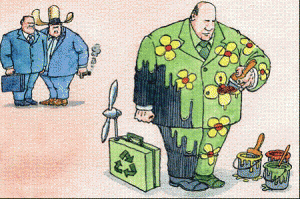
Emporios del azúcar - La inminente invasión de la caña transgénica
GRAIN
Una de las tendencias más destructivas de la agricultura en los últimos veinte años es la expansión de las plantaciones de soja [o soya] en el cono sur de América Latina. Agresivamente, las empresas que estuvieron a la cabeza de ese “auge” se mueven ahora a la caña de azúcar, y fijan la mira en grandes extensiones de tierra en los países del sur, donde el azúcar puede producirse muy barato. De no oponerle resistencia, es probable que haya que enfrentar a graves impactos: la producción local de alimentos será menospreciada, habrá expulsión mano de obra y desplazamiento de comunidades o quedarán expuestos a crecientes niveles de plaguicidas. Las agroempresas extranjeras afianzarán su control del azúcar. A continuación analizamos la confluencia entre el avance de la caña de azúcar genéticamente modificada y las transformaciones de la industria azucarera global.
En un lapso de tan sólo 10 años, casi toda la pampa argentina y enormes extensiones de bosques y tierras agrícolas en Brasil, Bolivia, Uruguay y Paraguay fueron convertidas en desiertos verdes, monocultivos de soja. [1] El auge de la soja en América Latina fue, y sigue siendo, un gran filón para el agronegocio. Al pequeño grupo de gigantes cerealeros mundiales que dominan el comercio internacional de semillas oleaginosas y el mercado de alimentos comerciales le proporcionó sitios de producción barata y abundante donde pudieron expandir y consolidar sus actividades mundiales. Esas mismas empresas, tales como Cargill, ADM y Bunge, también hicieron también miles de millones de dólares con la venta de los fertilizantes químicos requeridos, mientras que otras grandes compañías extranjeras, como AGCO y John Deere, obtuvieron pingües beneficios con la venta de tractores. Monsanto y Syngenta obtuvieron ganancias récord con la venta de sus semillas modificadas genéticamente y sus plaguicidas químicos.
La invasión de la soja se basó en un modelo de producción que gira en torno a la utilización de semillas modificadas genéticamente para soportar enormes dosis de herbicidas químicos. Monsanto proporcionó las semillas y los herbicidas mientras que una nueva generación de compañías agrícolas, dirigidas principalmente por empresarios urbanos, arrendó o absorbió grandes extensiones de tierra y administró la producción. Toda vez que se ha aplicado este modelo, los pequeños agricultores y los campesinos fueron expulsados y las comunidades locales resultaron devastadas por el éxodo rural y la contaminación con productos químicos.
En cuanto a las grandes transnacionales de los agronegocios, la experiencia con la soja en el cono sur les mostró el modo de lucrar con la expansión de la agricultura industrial en los países en desarrollo y les abrió la puerta a una nueva era de conquista. El azúcar, un cultivo con un largo historial de destrucción ambiental y cultural, y de cruda explotación humana, bien podría ser el próximo promotor de un auge al estilo de la soja, sobre todo porque en el campo ya hay nuevos cultivos de azúcar transgénica.
Etiquetas: Biotech, Caña de azúcar, GRAIN


















